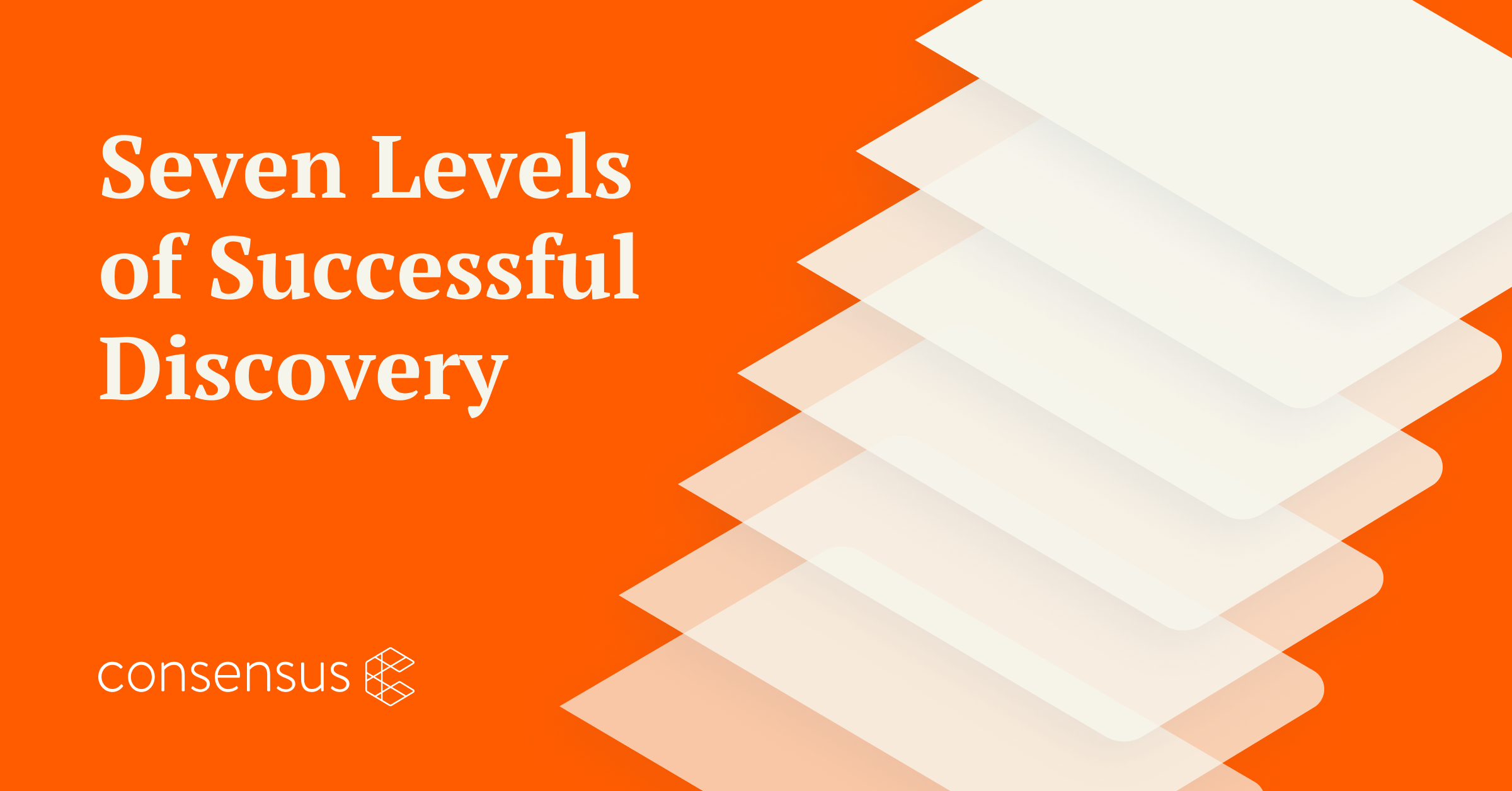These insight were pulled from the Seven Skills Levels for Stunningly Successful Discovery with Peter Cohan.
When a customer starts explaining a problem they are having, it can be easy to get ahead of yourself. You might blurt out that you are familiar with the problem and know a way to solve it as quickly as possible. If you don’t take the time to listen to the customer thoroughly, however, you can harm your discovery and possibly lose the sale even if you are trying to help the customer.
If you want to help the customer, you have to build trust with them. That trust is built through discovery. In fact, discovery isn’t complete until the customer believes you have a sufficient understanding of their situation and you have a clear and precise solution for their problem.
We know that discovery is important, and we want to help your team become better at it. Let’s dive into the seven levels of successful discovery.
Level 1: Actually Listen to the Problems
Before you can offer solutions, the customer needs confidence that you actually understand their problems. This level uncovers those statements of pain.
Because this is the first level, you should do more listening than talking. When a customer says, “We have a lot of problems,” don’t say, “Awesome! We have a lot of systems for you.” Instead, actually listen to the problems the customer is experiencing. Let them tell you what they are looking for.
Level 2: Dig Deeper
Next, explore those complaints more deeply and uncover pain points they might not have realized they’re experiencing.
Explore the workflow and figure out where the pain points are. The pain points are all the problems a client (or potential client) experiences with their current processes. Continue to listen to the customers as they share these with you and offer your own insights into other problems they may have. Refrain from offering solutions yet. This is still about exploring their problems.
Level 3: Broaden Pain and Find Impact
Now that you’ve highlighted and explored pain points, investigate the full impact of these challenges and demonstrate that the pain is broader than they first assumed. Find out who else is impacted by the pain.
Find out why they are impacted and what happens. Ask probing questions like, “Does it slow down their processes?” or “Does it stop their progress?” Ask follow-up questions to every bit of information they provide.
For example, if someone says their current process is manual, expand on that with questions like:
- Do you ever have a situation where errors creep in?
- How do these errors affect your processes?
- How do you identify and resolve them?
If someone says they have a paper process, expand with questions like:
- What are the difficulties you experience with this process being a paper process?
- Does this slow down other processes?
- Are other people impacted when errors happen in these processes?
If someone says they have an email process, expand. If someone says there are false positives, expand. Use this time to gather as much information as you can by asking as many follow-up questions as you can.
Level 4: Quantify
Find a way to quantify the pain points you’ve uncovered to strengthen your argument to change these processes. Again, you’re not offering your solution yet, but you are illustrating what these pain points are costing them.
Find a tangible difference between an organization’s existing process and their vision of the ideal process. Any time a customer admits pain, quantify it. If a customer lets you know that a current process takes too long, find out how long it takes and how long they think it should take.
Level 5: Re-engineer Vision
Let your customer know that you can help them visualize this information in a new way. Instead of just having numbers plugged into a spreadsheet, assist them in charting and graphing information to show a visual representation of potential success.
Level 6: Apply these Skills
Once you’ve mastered the other levels, apply these skills to the broad range of customers represented across the Technology Adoption Curve. Make sure you plan to include disruptive and new product categories, highly transactional sales cycles, and other scenarios.
Find out what other solutions the customer has sought out, what hasn’t worked, and why. Be cognizant that some customers may be “burn victims,” who have tried a solution from a different company only to have it fail. After you find out what happened, reassure them it will not happen again with you, and let them know why you are different.
Level 7: Cohesive Discovery Methodology
Finally, integrate and align the skills above into a cohesive discovery methodology.
Having all the discovery skills in the world won’t help you if you don’t have the methodology. Discovery methodology is the ability to combine findings into a cohesive experience for the customer.
Discovery methodology addresses three key questions:
- Why do things a certain way?
- What should be done?
- How and when should you execute specific skills?
Discovery methodology combines the following:
- Timing and flow
- Components and reuse
- Environmental factors
- Team tactics
- Demographics
- Prospect’s team
- Workflow
- Impact
- Transition vision
Discovery methodology comes with practice.
You won’t be able to master these skills right away. These take time and some new ways of thinking to be able to confidently execute all 7 levels of discovery.
If you and your sales team are having problems with any level of discovery, reach out to Consensus for help. We work with companies to help you make your Presales, discovery, and Sales efficient and effective through our unique demo automation and tracking systems.
